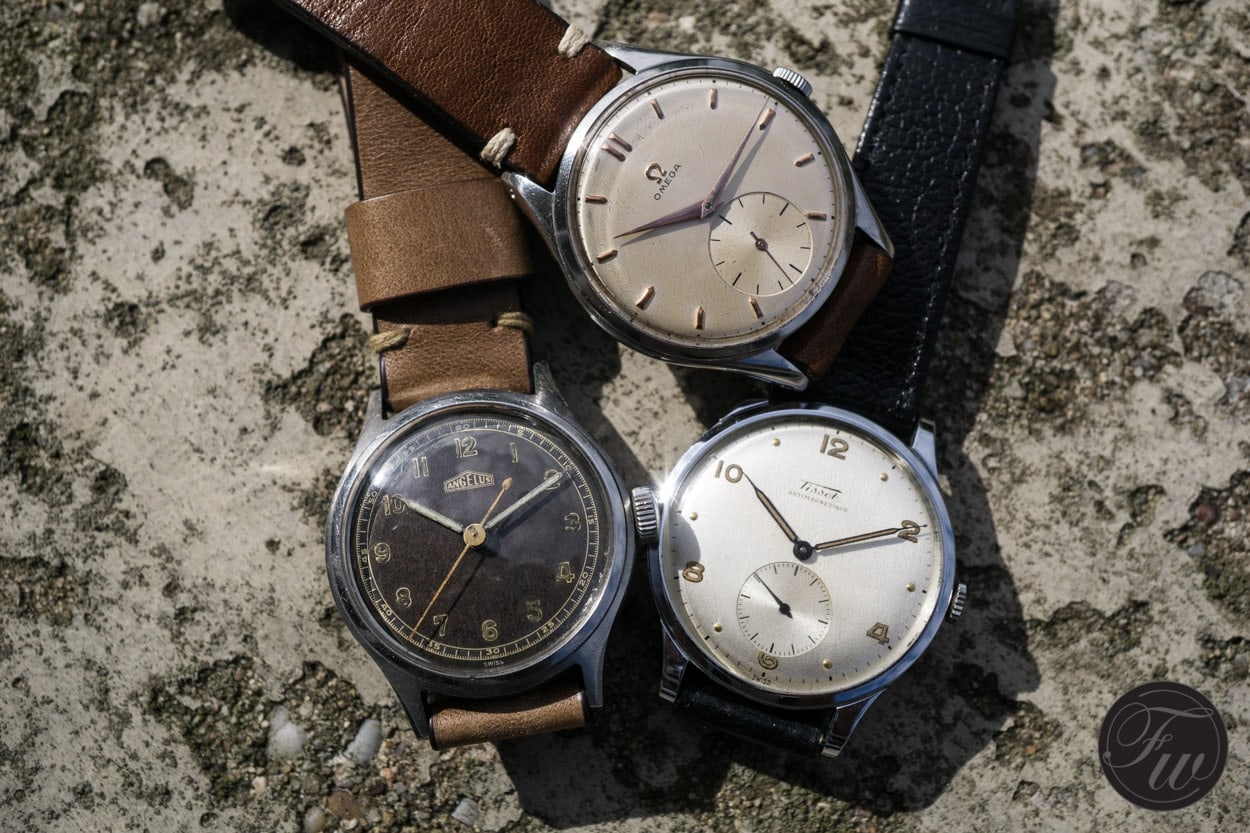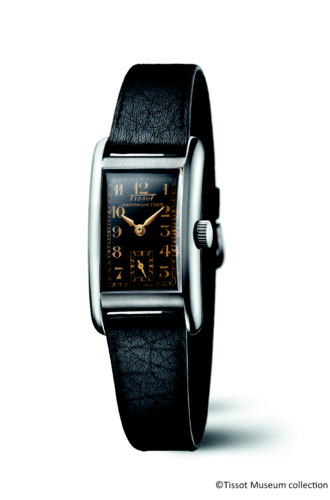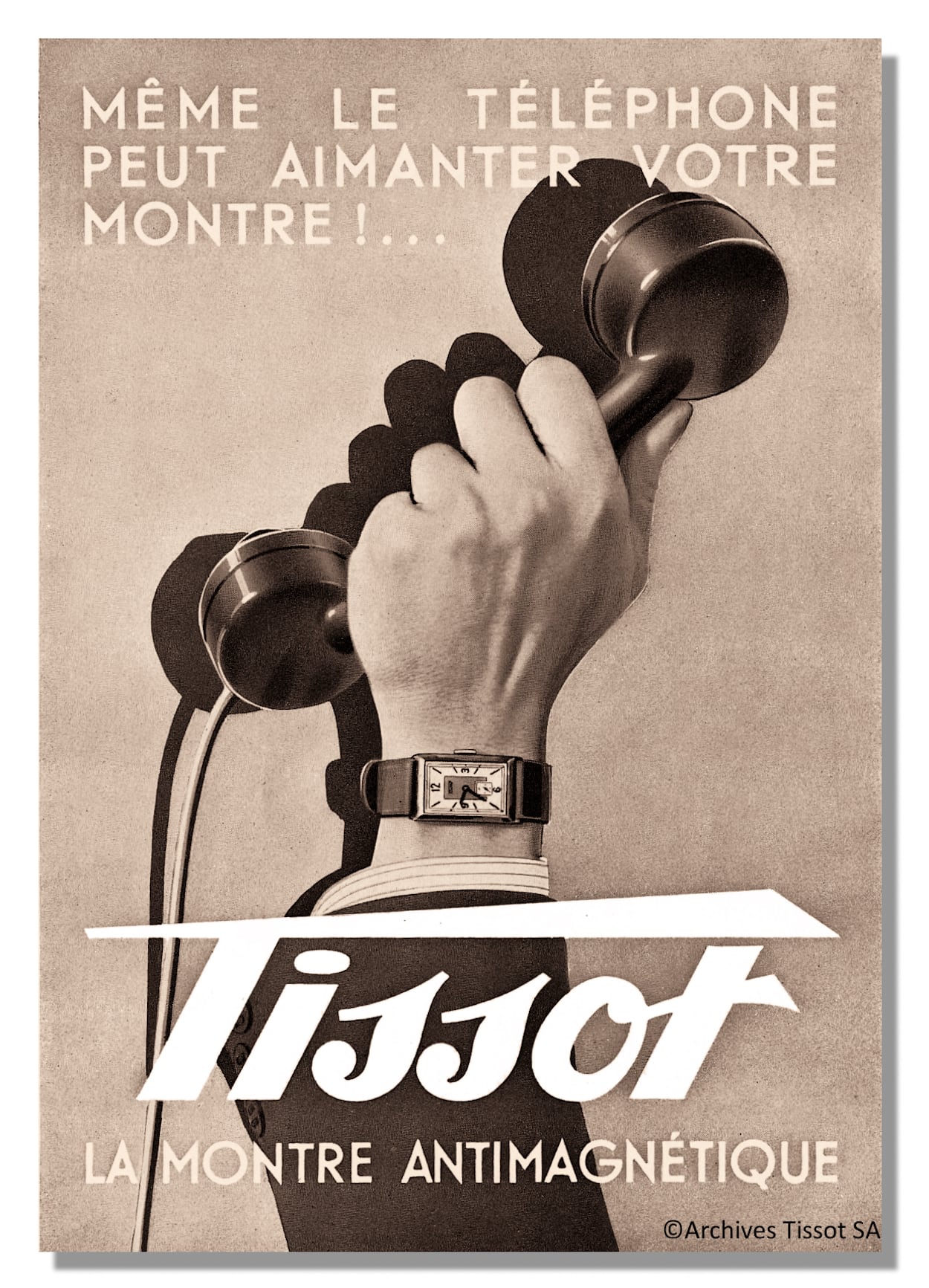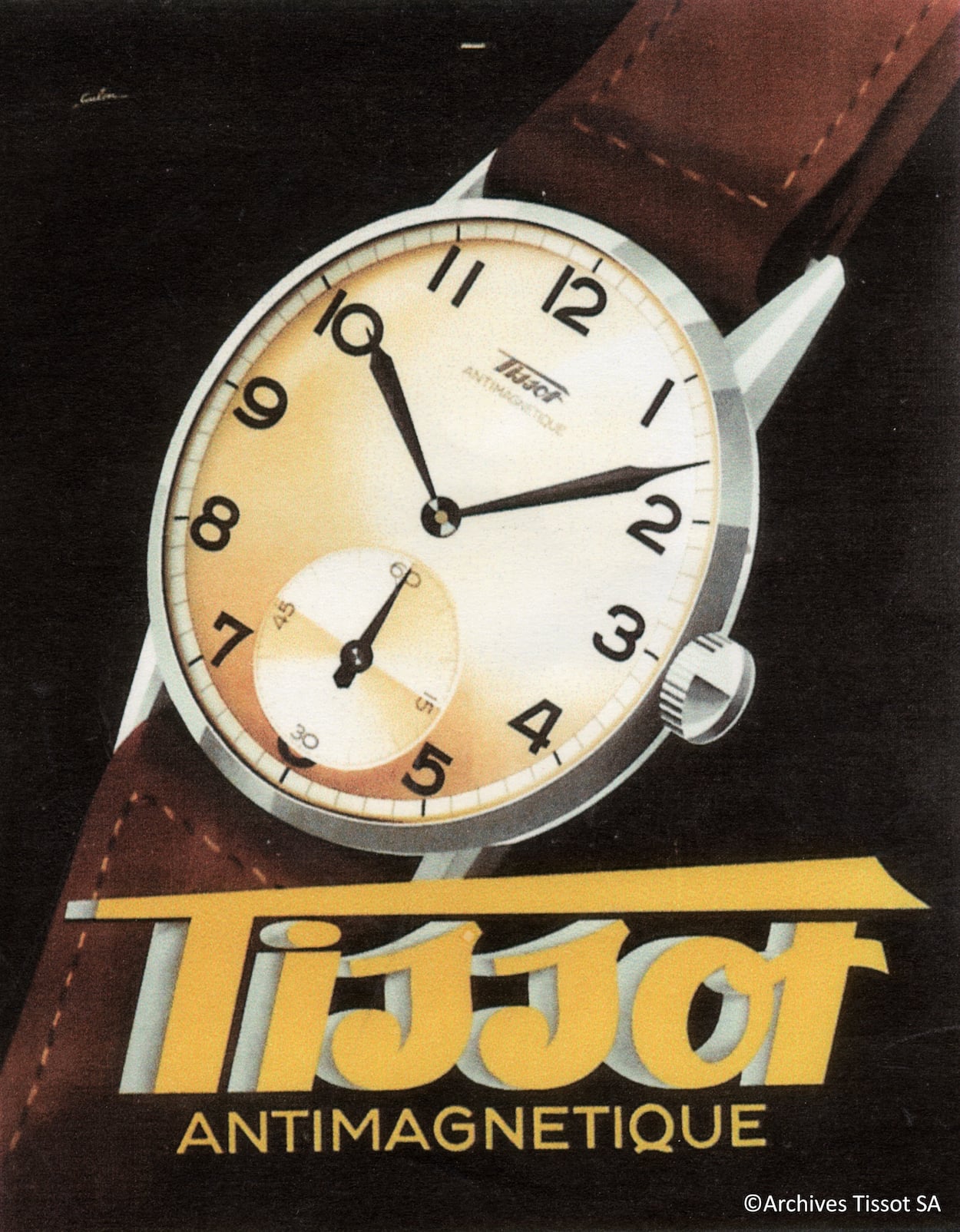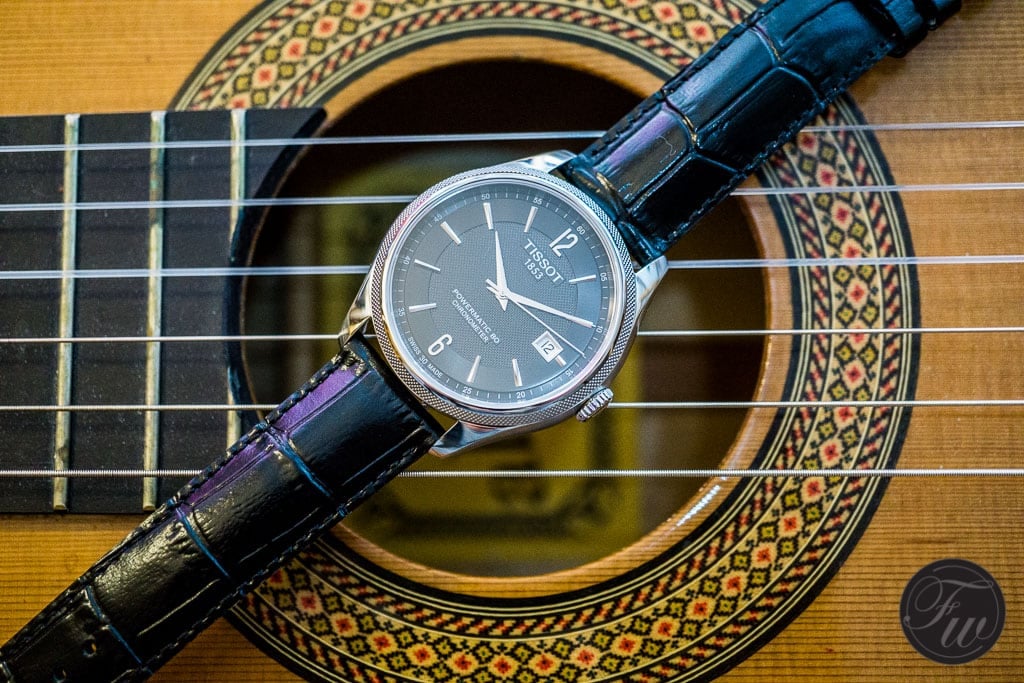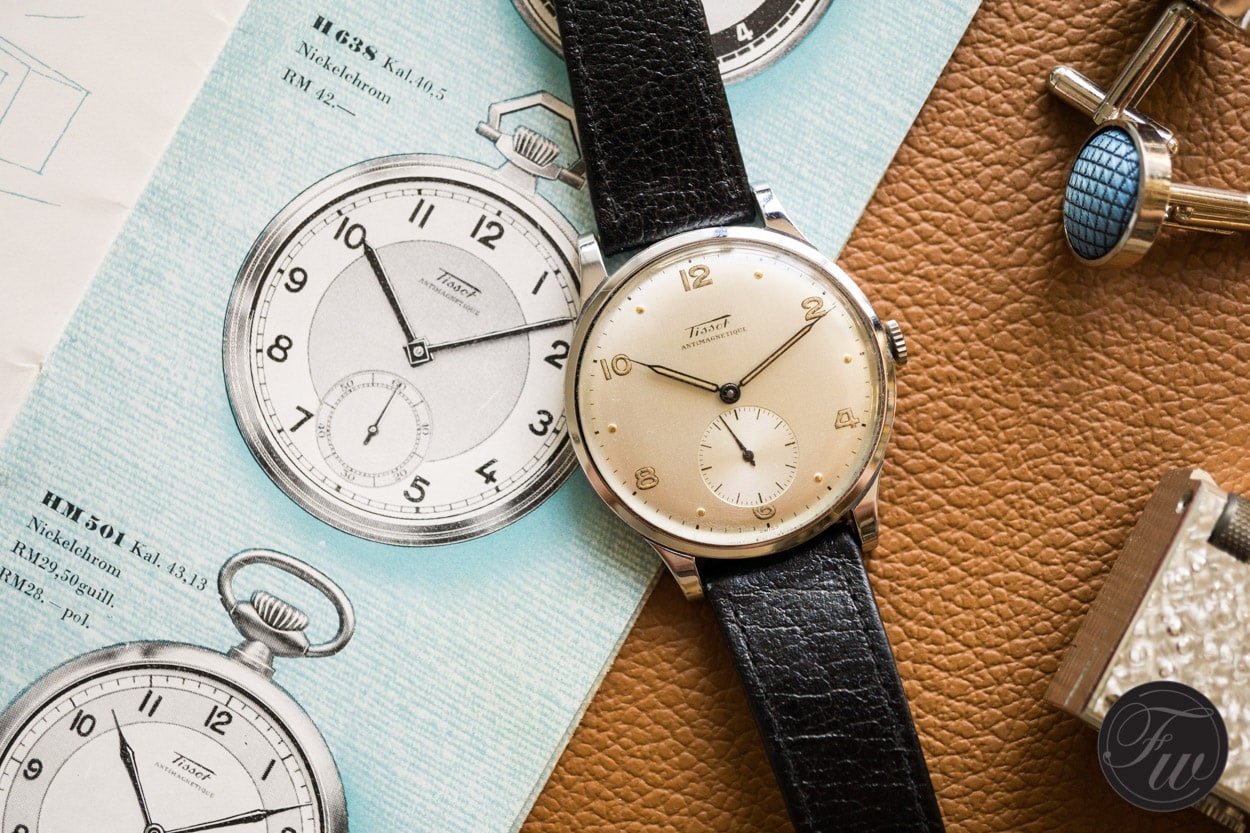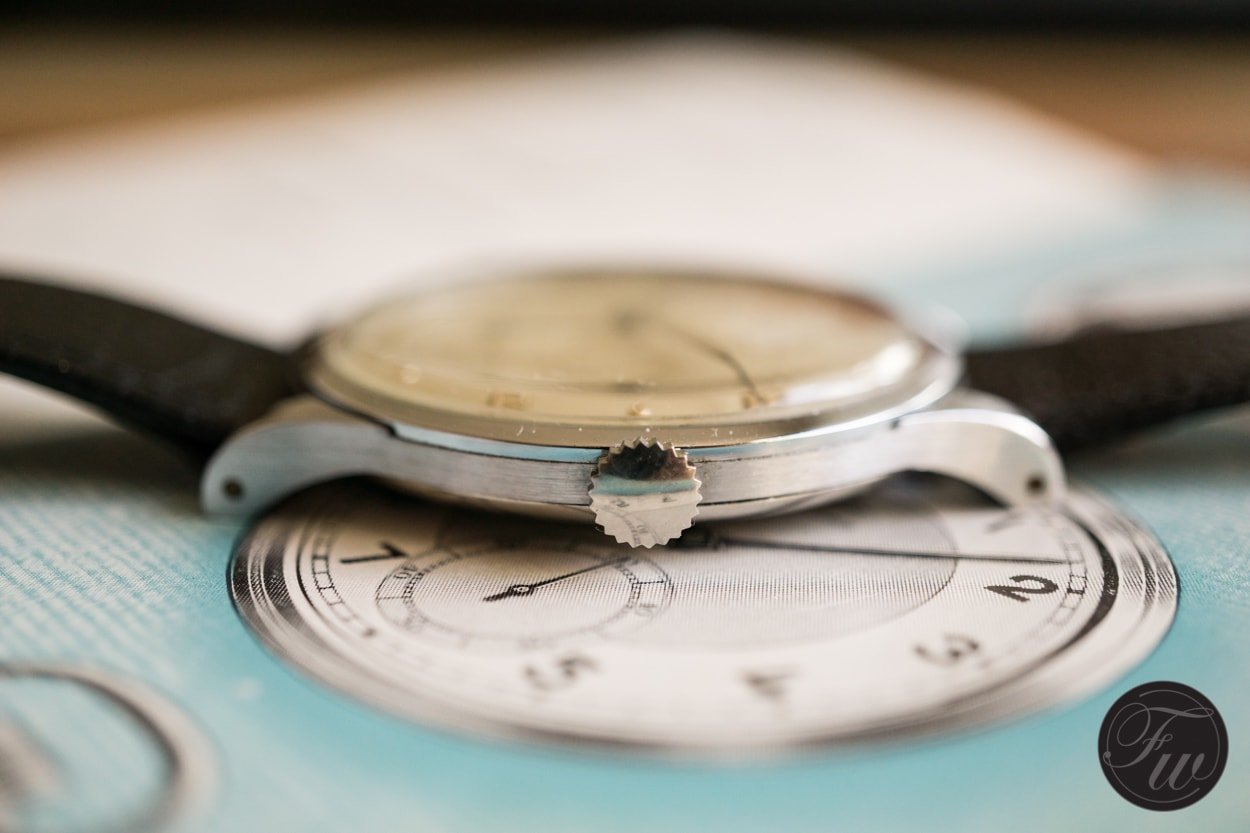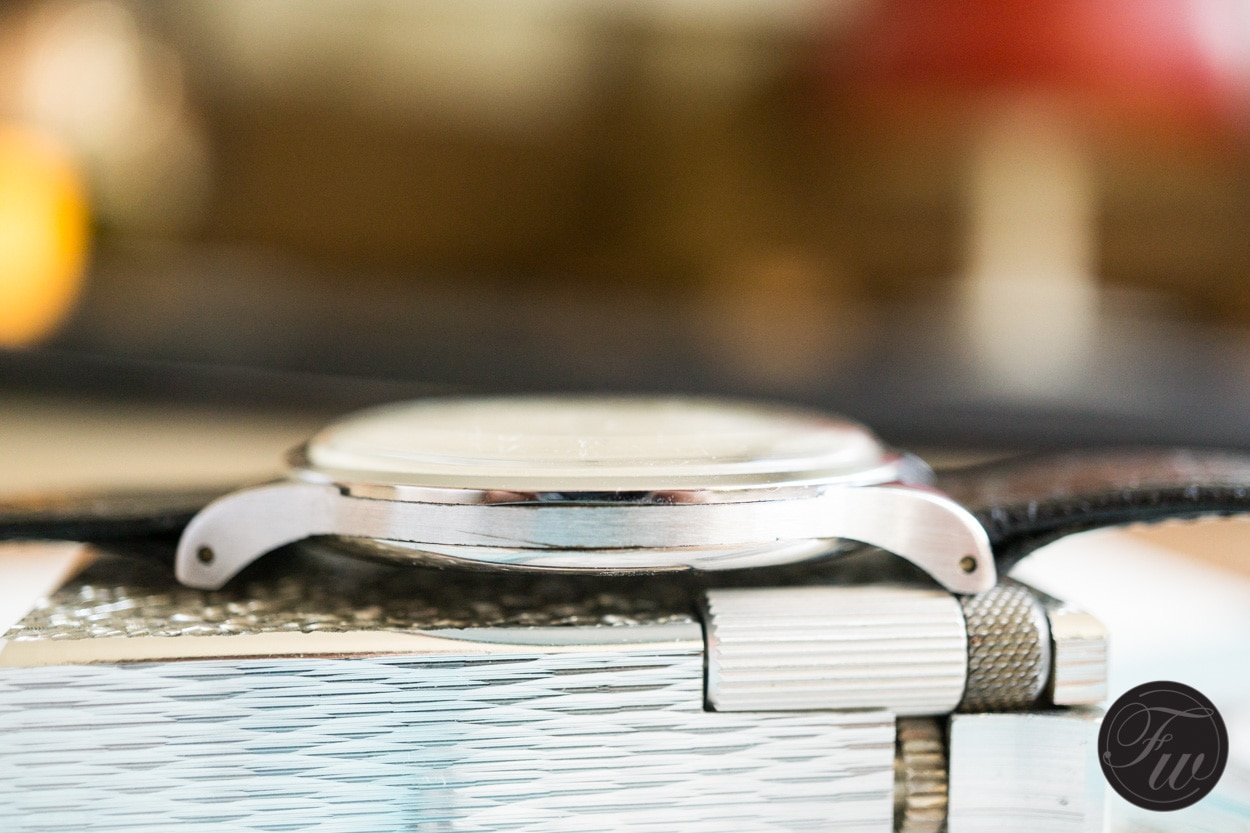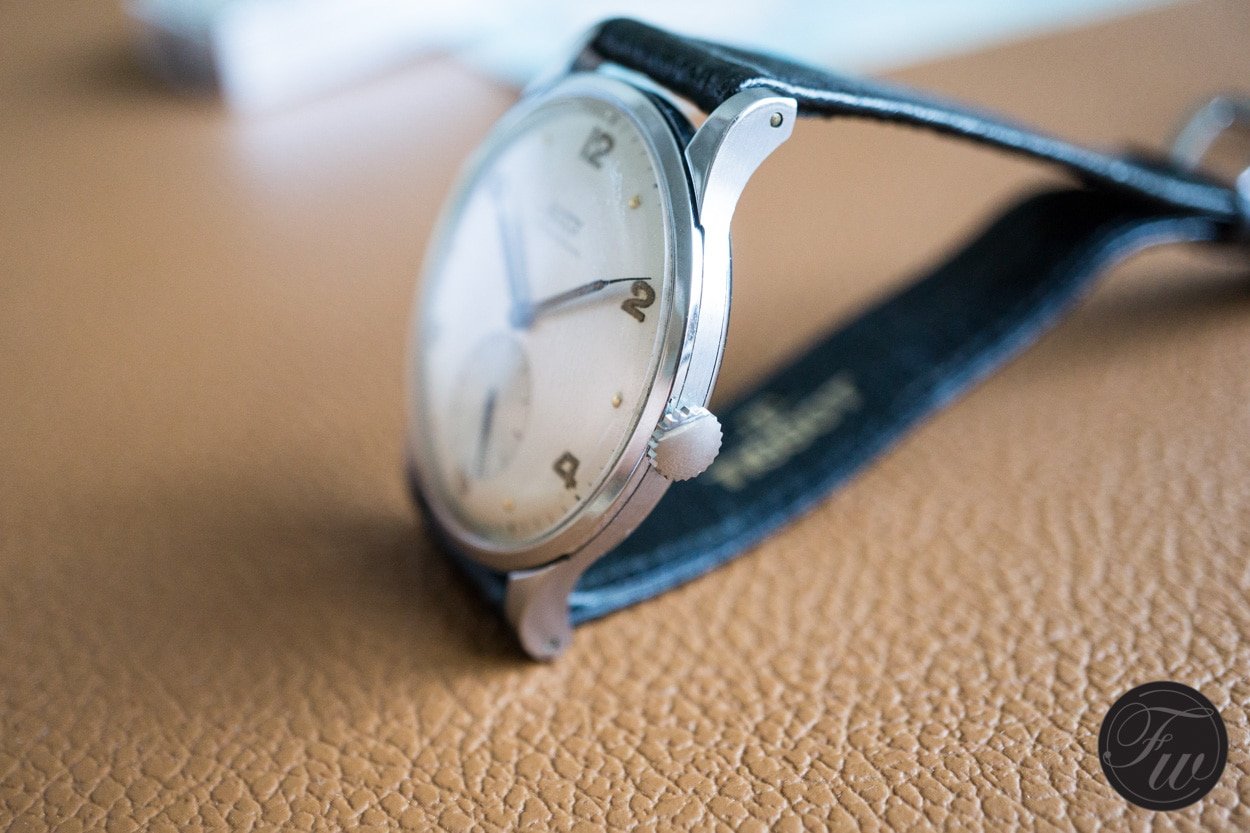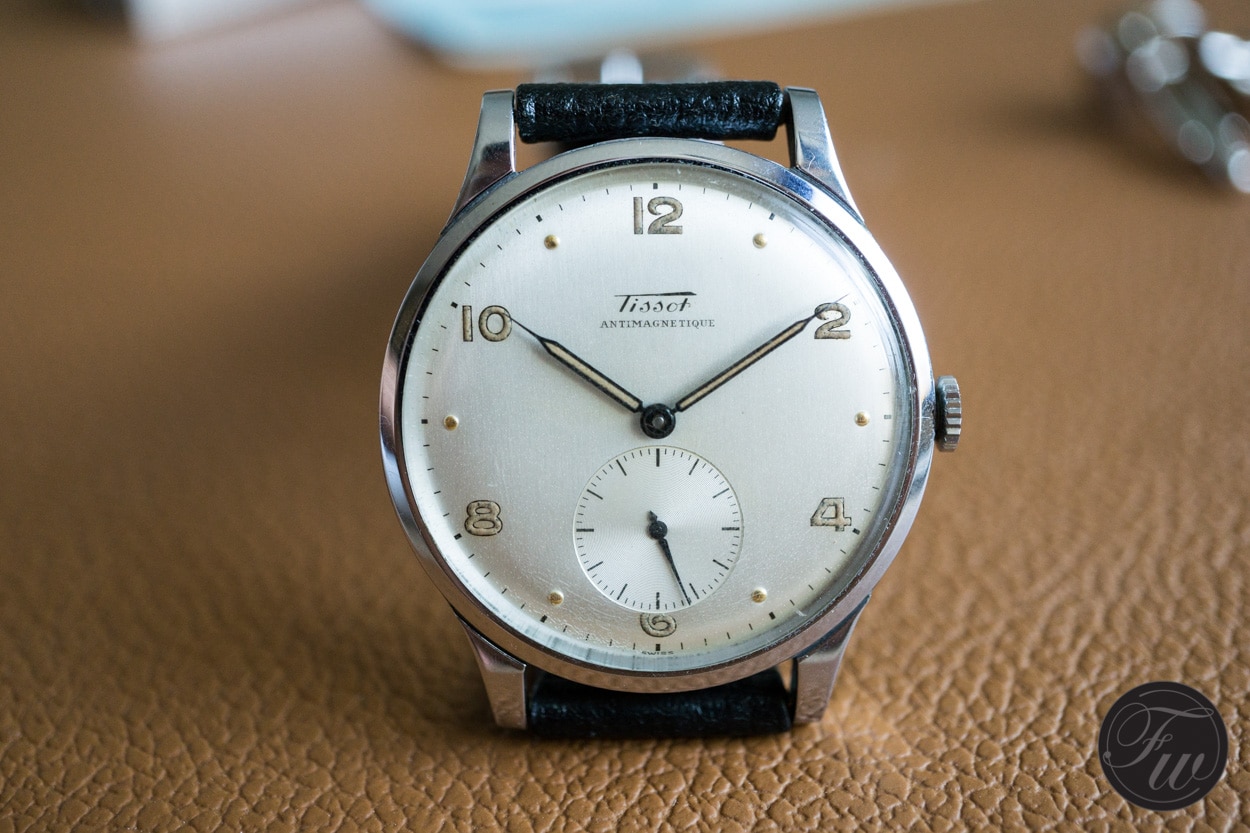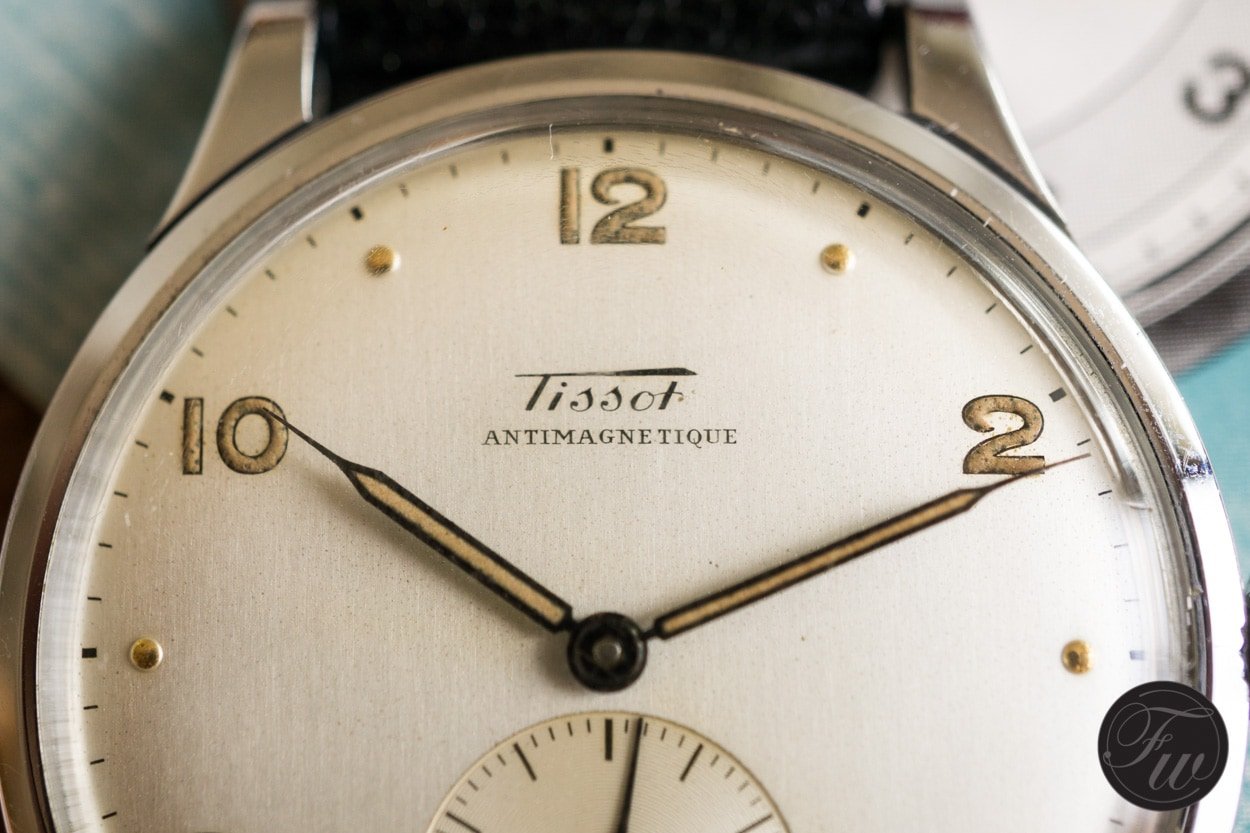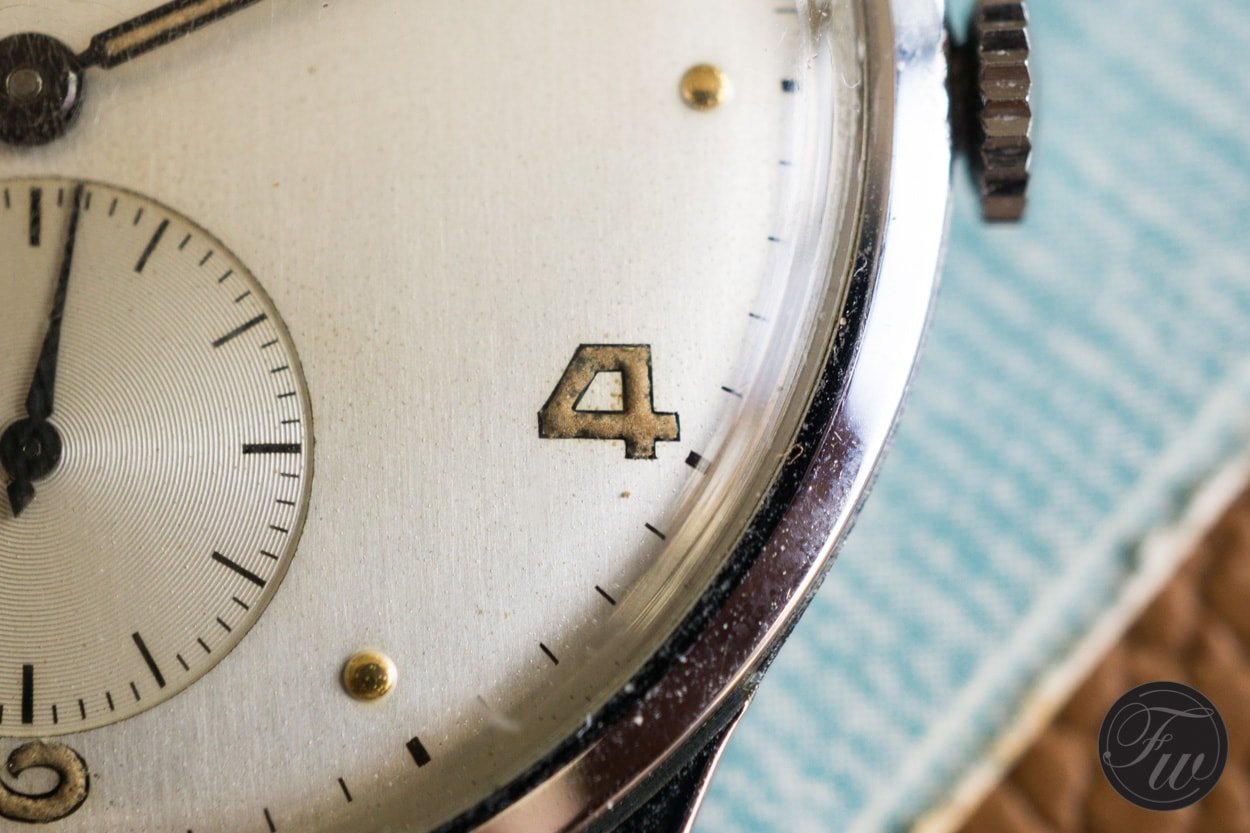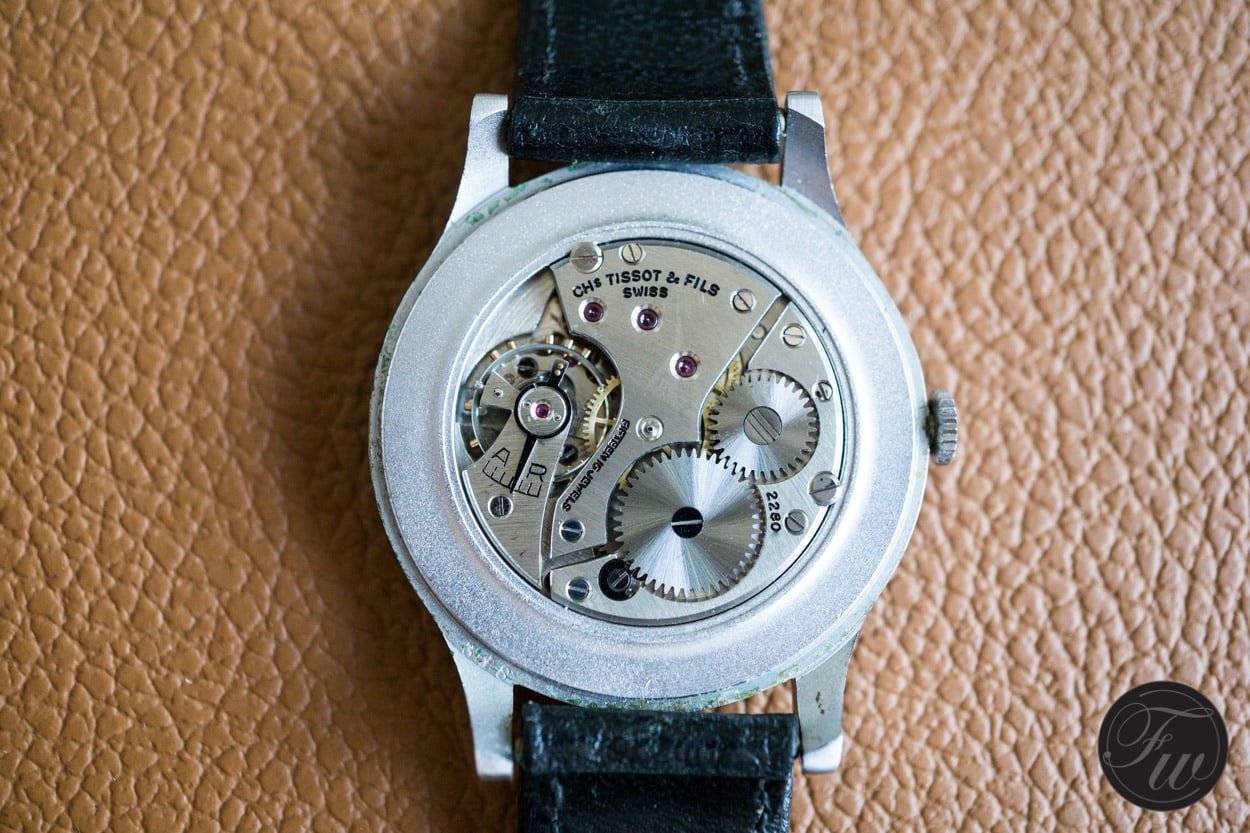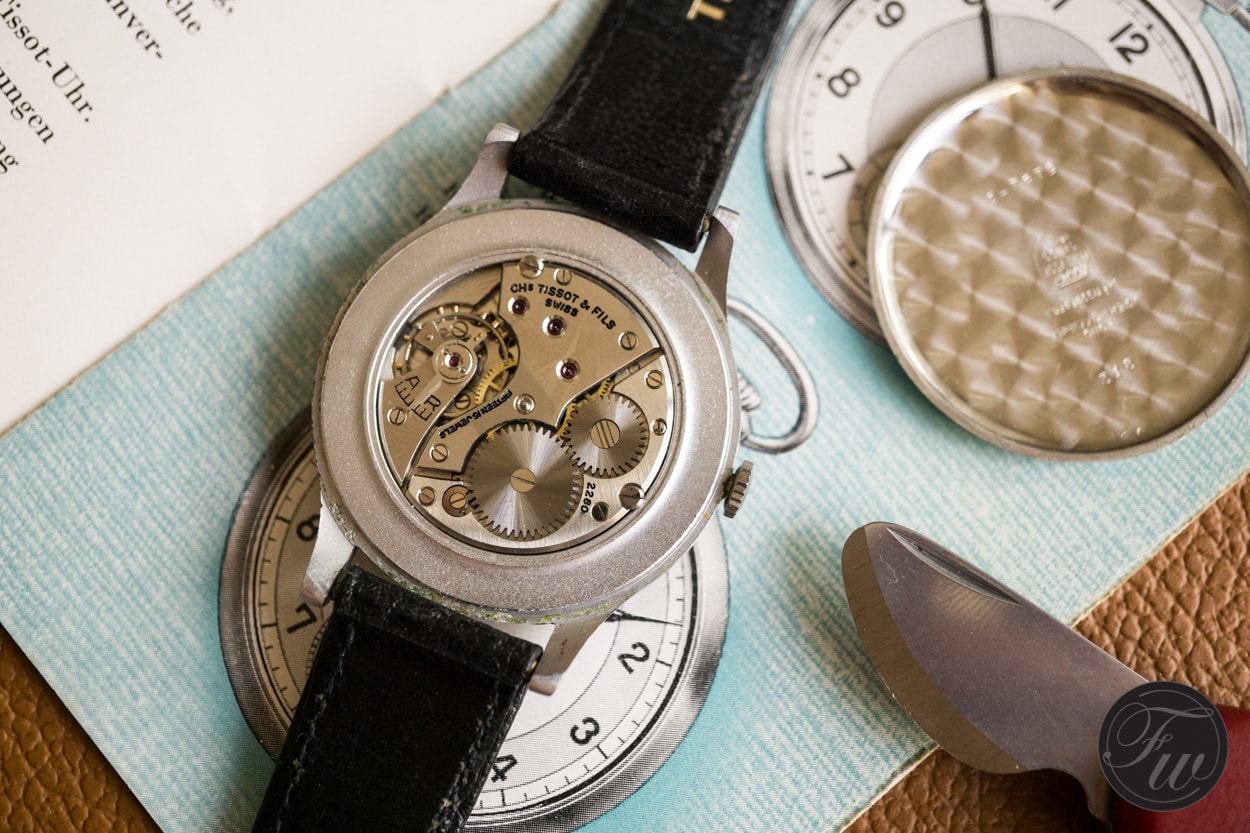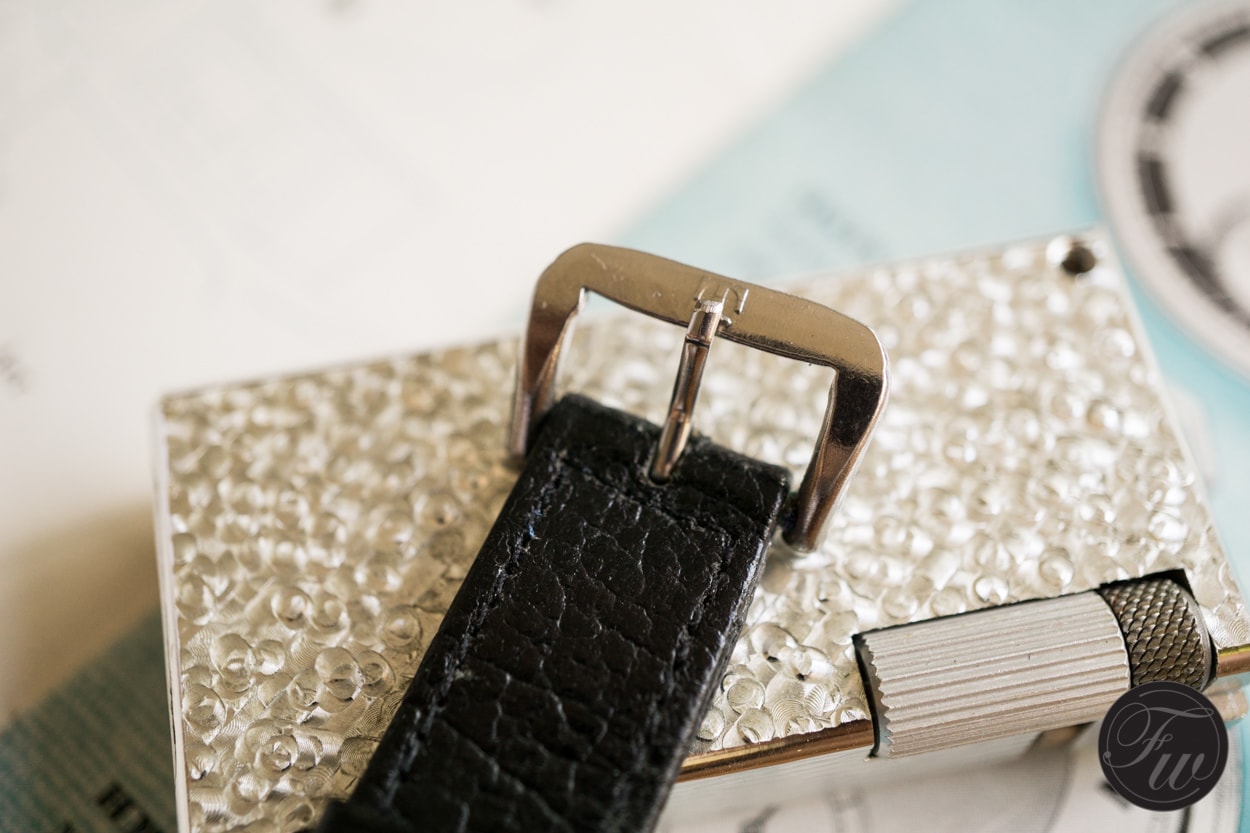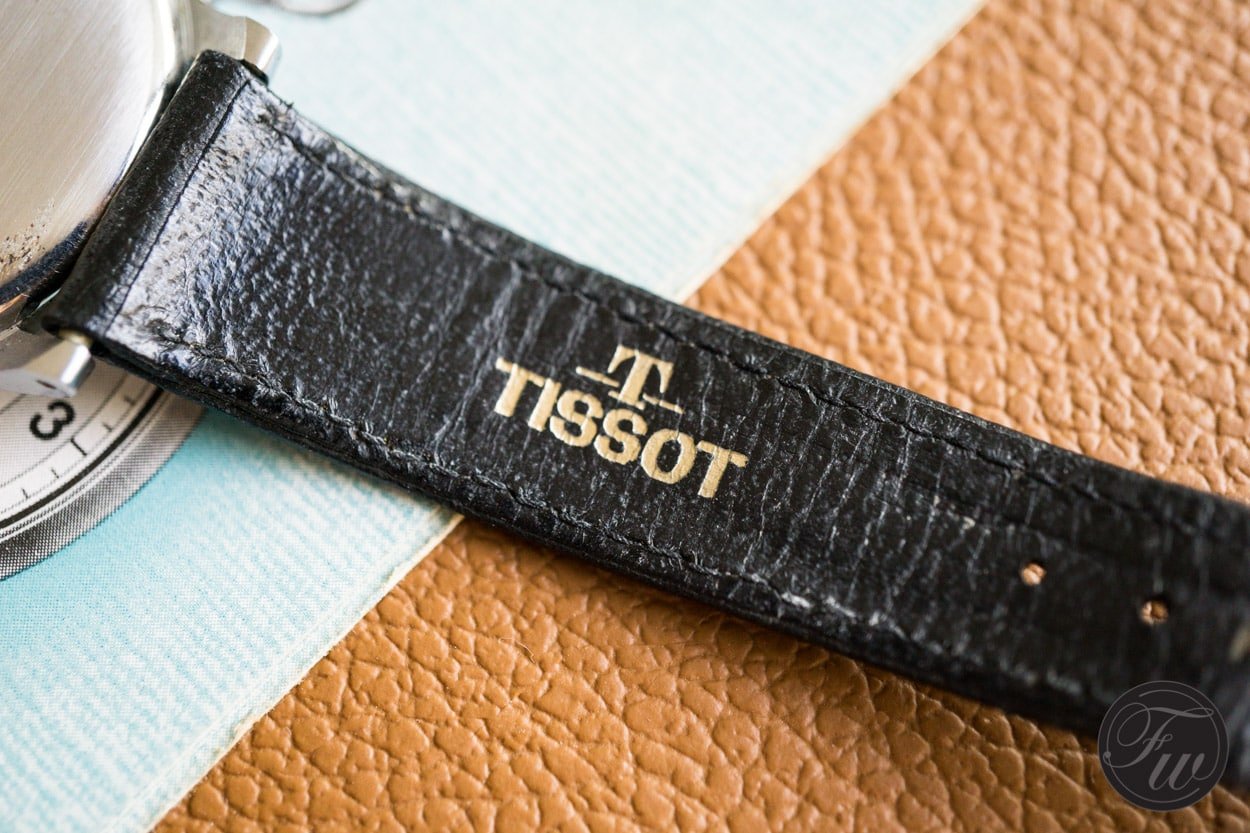Tissot Antimagnetique Jumbo and Antimagnetique History
The beauty of collecting vintage watches is that there’s a fanbase for everything. Vintage chronographs from the 1940‘s and 1950’s are one of the hottest areas. Just think of how vintage Seiko’s popularity grew in recent years though. The brand did not have the following base in 2014 like it has today. Roughly the same happened to vintage Doxa divers as well. Another area that has always been around but collectors were kind of low-key about them were time-only watches. Three-handers if you want to call them, and especially jumbos. Jumbos are simple time-only watches that have exceptionally large cases for the time they are coming from. In vintage terms, this could be anything from 35.5-36mm upwards. For the modern times, these are the perfect dress watches; slim, elegant, simple and rare. Today we will look at one of these gems; my vintage Tissot Antimagnetique.
Antimagnetic
Let’s look back to the history of antimagnetic watches for a moment. The earliest date – we know – connected to experimenting with antimagnetic watches dates back to the mid-1800’s. Watchmakers at Vacheron Constantin were the among the first to deal with this issue but at the time lack of technical innovations made it impossible to achieve a breakthrough in this field. In the dawn of the 19th century however partly thanks to newly discovered alloys like Invar and Elinvar, partly to the usage of palladium (an extremely expensive material) watchmakers achieved a breakthrough in this field. Vacheron Constantin developed an antimagnetic chronometer pocket watch in 1915 but there was no wristwatch with such capabilities at the time. The world did not have to wait too long; 15 years later in 1930, Tissot introduced the first antimagnetic wristwatch.
Telephones, radios and microwave ovens
So from 1930 on people were able to buy a watch that could withstand a high magnetic field. But why did they need that in the first place? The Industrial Revolution (1769-1850) was the first boost in the development that resulted in the Technological Revolution (or Second Industrial Revolution) which brought electricity to the everyday consumer. More and more appliances used electricity which of course creates an electromagnetic field. Radios became a household object of the 1930’s too. With them came radio waves and their magnetizing capabilities. Furthermore, devices like telephones or radios (technically anything with a speaker) were also able to magnetize items they got close contact with. Like watches for example. Later in time, with the new inventions such as the microwave (1946) things got even more serious. Watchmakers realized the threat of magnetization meant to the accuracy of watches. Hence the development to produce antimagnetic watches started.
Why so serious?
We talked about how the development of antimagnetic watches started. Also discussed what are the items that cause magnetization of your wristwatch. But what does it actually do to your timepiece? Watch movements have a number of tiny, metal parts that are very delicate and sensitive to external impacts. As you know the heart of a watch movement is the balance wheel (and spring). This, with the escapement, is responsible to distribute the energy at a constant rate creating the beating. Watches usually have metal balance springs which when magnetized will not keep the beating rate but start to act unbalanced. As a result, the watch will start running fast and messes up the accuracy of the movement. It is this, why it is crucial that the balance beats in at a constant rate. Some movements nowadays, like the Tissot Powermatic 80, uses silicon balance springs to avoid magnetization.
Tissot Antimagnetique
As I said it above, Tissot was the first company to introduce non-magnetic wristwatches to the market in 1930. It was a small rectangular timepiece with the Tissot logo on the dial, and “Antimagnetique” underneath it. This became a standard for many years. As a matter of fact, the release of the first antimagnetic Tissot watch also marked the year they switched to their then-new logo. This logo, with minor changes, stayed on the dials until 1959. I have yet to come across a watch with the 1960’s logo but with Antimagnetique on the dial. So it’s safe to assume that the new decade also marked the end of the Antimagntique on the dials and the dawn of the new logo, which is very similar to the one the brand uses today. This puts the “Tissot Antimagnetique” watches, as far as dial design is concerned, between 1930 and 1959.
Case
My Tissot Antimagnetique arrived at me about a year ago from eBay. I saw the listing and thought the watch looks really huge. However, we all have experiences with watches that looked huge on the photo but when we finally received it they turned out to be not larger than 35mm. Still, something told me this is going to be a large watch. The proportion of the case and the lugs was an indicator of that. Even asked the seller, who told me it was not bigger than 35mm. Well, she was wrong. When the watch arrived I was blown away by the looks. 38.2mm case, original finish on all sides and a pristine dial. My Omega jumbo is 2mm larger than the Tissot however due to the super slim bezel the Tissot looks actually way bigger. It is also less than 8mm thick.
Dial To Die For
A case can be polished, a strap replaced but there’s not much you can do to a damaged dial. Luckily my watch has an amazingly crisp dial. The Tissot Antimagnetique logo, the painted indexes even the radium on the numerals (and in the hands) are still intact. There is only a tiny bit of discoloration, almost invisible to the naked eye where the hour hand made a mark. All in all, there is no flaking or bubbling the Tissot logo is still beautiful and fresh. The watch has the original slightly yellowed crystal. You can see the aging on the bottom left on some of the photos. The thin, blued steel, stick hands compliment the large dial nicely. Their aged deep yellow lume works well with the creamy dial. Imagine the price tag on this watch of that logo said something else other than Tissot.
Calibre 27 Movement
You can see that the movement is much smaller than the watch case itself. It is a manual wind, 15 jewel Tissot movement with about 40 hours of power reserve. It is most likely a derivative of the Tissot caliber 27. As the dial suggests it, the watch is of course antimagnetic. Just to be on the safe side, I checked it and it did not show any sign of magnetization indeed. Even after close-to-70 years. According to a Tissot serial number chart, I have the watch came to the market around 1949 (2.2mill serial). The style, as well as the logo, corresponds to that. There is no way I could determine the age better than that at this stage. Tissot does have an extensive archive like other Swatch Group brands such as Omega or Longines. You can apply for an extract of archives.
Strap & Buckle
While the watch came with original Tissot strap and buckle I hardly believe these are period-correct. It is very easy to determine, all you have to check is…yes, you guessed it; the logo. The Tissot logo you see on both items are older than the Tissot Antimagnetique you find on the dial. It is the one that came in 1959 (as I already explained it above). This logo was in production until 1976. It is safe to assume that the watch probably had a service, or at least received a new strap somewhere around the 60’s or early 70’s. Though it is a nice strap and actually is very comfortable I tend to swap it to a vintage leather with side-stitching. On the one hand, it prevents the original Tissot strap to fall apart eventually. On the other hand, I like it on a bit thicker leather strap.
If you want to see the Tissot Antimagnetique on a vintage leather strap check out my Instagram account @ferenczibazs and scroll down a bit.
What’s left to say
The look of the watch is spectacular and even if it wasn’t a jumbo, it would probably be a very wearable piece due to its design. This era of Tissot’s history produces some of the most pleasing timepieces to the eye. The Tissot Antimagnetique logo is so beautiful and appealing to vintage watch fans. The fact that it is also antimagnetic is a great feature and a cool conversation starter. Nowadays more than ever an antimagnetic watch can be very useful. Just think of your magnetic clips, Macbook chargers, and god knows what else that surrounds us. A vintage watch is a delicate thing, but one that can withstand (even if it’s only to a certain degree) the impact of the aforementioned items is as useful today as it was 60 years ago. Some things age, others stay relevant.
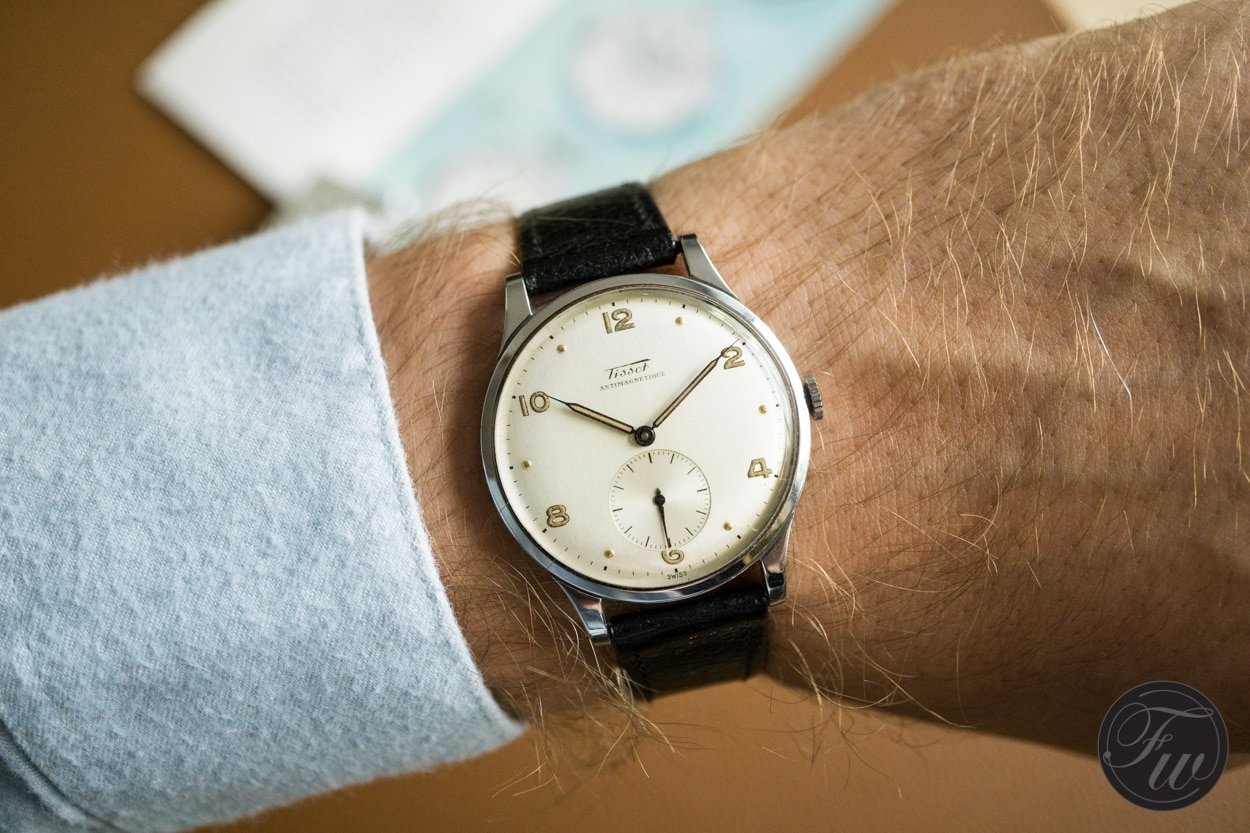
I would like to thank the wonderful people at the Tissot Headquarters as well as Mr. Pim Jans (From Swatch Group Netherlands) for their tremendous support in this Tissot Antimagnetique article. Visit Tissot’s website here.

